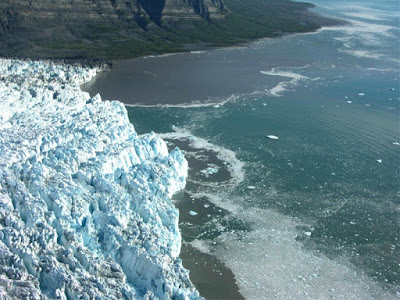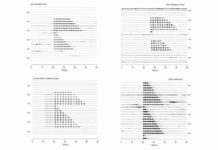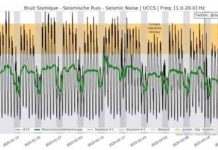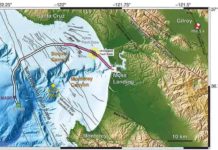
Tidewater glaciers flow from frigid mountains and ice sheet interiors down through ice-carved valleys and terminate in the sea, within fjords. Beneath the glaciers, liquid water streams toward the ocean, where it can drive melting at the terminus of the ice sheet and promote sea level rise. But terminus melting is poorly understood because it is difficult to measure the timing and amount of subglacial water release. Now, Bartholomaus et al. have shown that seismic signals can reveal variations in water discharge and answer long-standing questions about glacier behavior.
Subglacial discharge starts out at the upstream surface of a glacier in the form of melted ice and rainfall. It flows down through icy channels to the glacial bed, where it affects glacier speed and bed erosion, before it emerges at the end of the glacier.
Discharge can vary hour to hour, day to day, and season to season. Since 1979, scientists have hypothesized that subglacial discharge events cause distinct seismic rumbles, but few have put this prediction to the test.
Over the course of one summer, the authors collected data from a seismometer located on land near the end of Alaska’s Mendenhall Glacier, which terminates in a lake. When they compared the amount of water discharge measured at the terminal lake with the strength of seismic background noise, they found that the two quantities, discharge and seismic noise, matched closely.
The relationship between water discharge and tremor also held true for Yahtse Glacier, another Alaskan glacier. There, the scientists used nine seismometers and a weather station to measure seismic tremor and discharge from 2009 to 2011. The results confirmed that seismic tremor can be used as a proxy for discharge timing and rates. Seismic tremor patterns were also detected at one other Alaskan glacier and at a glacier in Greenland.
The scientists didn’t just confirm that seismic tremor mirrors discharge; they also showed how it can be used to better understand glaciers. Data showing heavy summer discharge allowed them to discard a 1987 hypothesis that in the summer, fast ice flow would disrupt water channels melted into the sole of the glacier.
Reference:
Timothy C. Bartholomaus, Jason M. Amundson, Jacob I. Walter, Shad O’Neel, Michael E. West, Christopher F. Larsen. Subglacial discharge at tidewater glaciers revealed by seismic tremor. DOI: 10.1002/2015GL064590
Note: The above post is reprinted from materials provided by American Geophysical Union. The original article was written by Sarah Stanley, Freelance Writer.










